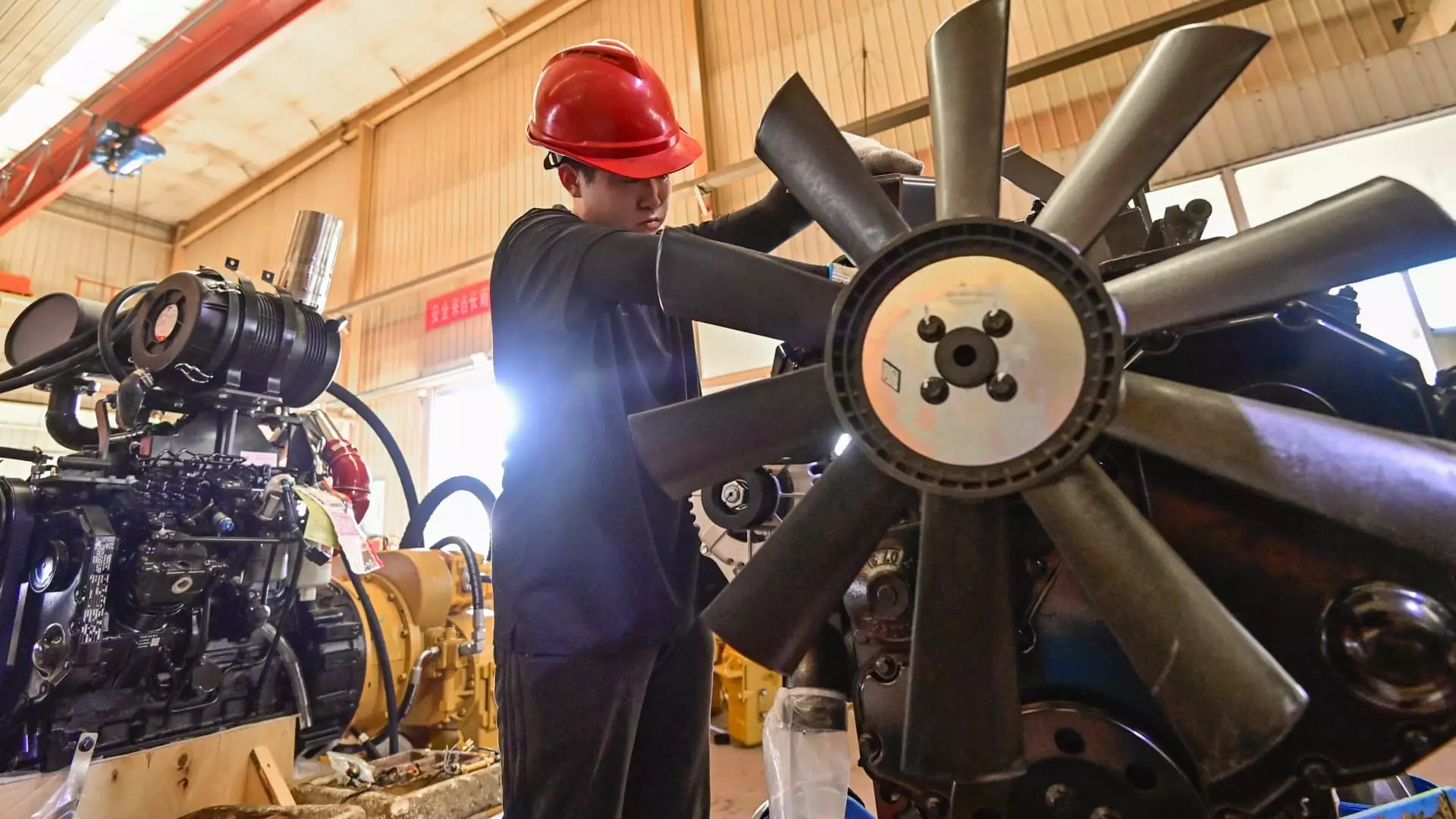In a recent development, China’s manufacturing sector displayed signs of recovery, particularly among smaller manufacturers, as indicated by the latest Caixin/S&P Global manufacturing purchasing manager’s index (PMI) for October. The data, released on a Friday, revealed a PMI score of 50.3, surpassing the expected median estimate of 49.7 from a Reuters poll. This figure is noteworthy, especially when compared to the September reading of 49.3 and the figures recorded in the preceding months, which were 50.4 in August and 49.8 in July. A PMI reading above 50 reflects expansion, while a score below this benchmark suggests contraction, thereby marking October as a crucial turning point for China’s manufacturing outlook.
It is essential to understand the differing compositions of various PMI readings. The Caixin index primarily focuses on private sector companies and exporters, offering a glimpse into the conditions facing smaller manufacturing entities, whereas the official PMI data—which was released just prior and also indicated manufacturing expansion—primarily captures the activities of larger, state-owned enterprises. This distinction is critical; the experiences of smaller manufacturers often differ significantly from their larger counterparts due to various factors such as market access, resource allocation, and operational flexibility.
Wang Zhe, a senior economist at Caixin Insight Group, emphasized the balance of supply and demand in the current market conditions, indicating a notable recovery in overall market demand alongside steady production growth. This sentiment suggests a gradual return to normalcy as manufacturers adapt to the evolving dynamics of both local and global markets.
Adding to the optimism, the rise in incoming new orders for Chinese manufacturers marked the fastest pace of increase in four months. This uptick has been attributed to favorable underlying demand conditions coupled with new business development initiatives. However, it is crucial to recognize that despite these positive trends, export orders still experienced a decline, albeit at a slowing rate. This points toward persistent challenges for manufacturers who are grappling with the complexities of international trade, particularly in the current geopolitical climate.
Employment prospects also remain a concern. Although the overall figures show an uptick in business activity, the manufacturers continue to exhibit caution regarding workforce expansion. This hesitation suggests a lingering uncertainty about the sustainability of the recovery, as businesses tend to prioritize financial stability amid fluctuating demand.
Support for the manufacturing sector has been bolstered by the Chinese government’s recent stimulus measures, which were initiated in September. The People’s Bank of China implemented a cut in the reserve requirement ratio (RRR) and lowered the seven-day reverse repurchase rate, a move interpreted by many analysts as an effort to catalyze economic activity. Industry observers like Andy Maynard, managing director at China Renaissance, view these measures as positive yet suggest that they may still represent an early stage of broader economic recovery.
Despite the largely positive data coming from smaller manufacturers, the broader economic landscape presents a mixed bag of signals. China’s second-largest economy continues to grapple with muted consumption and significant challenges within the embattled property market. Export performance emerges as a somewhat reassuring factor, yet analysts remain cautious about the prospects for sustainable growth, particularly given the intense competition within domestic markets and the low industrial utilization rate.
Gary Ng, a senior economist at Natixis, highlighted existing uncertainties, especially regarding external demand influenced by upcoming geopolitical events, including the U.S. elections and an increasing wave of protectionism globally. The potential for price recovery could serve as a crucial indicator for assessing the ongoing manufacturing revival.
As China’s parliament standing committee convenes next week, anticipation builds regarding fiscal stimulus announcements. The outcomes of these meetings, expected to conclude on November 8, could provide further clarity on governmental strategies aimed at bolstering economic resilience in the face of uncertain conditions.
While October’s gains in manufacturing activity illuminate a hopeful trajectory for China’s economy, vigilance remains critical as industry participants navigate an increasingly complex landscape characterized by both opportunity and risk.


Leave a Reply